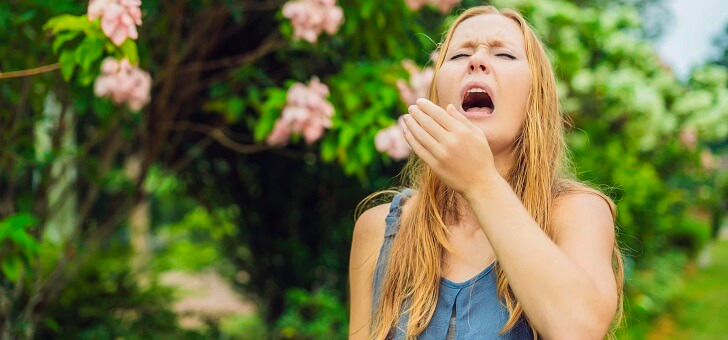For many Australians, particularly those in the southern states, September can be a wonderful time. For the footy fans, it means finals; for those who struggle with the short cold days, warmer temperatures are celebrated.
For some, however, spring is a bittersweet affair. The prospect of flowers in bloom can bring a sense of dread – pollen, an allergy sufferer’s worst nightmare.
The word pollen is Latin, meaning ‘fine flour’, and the even the thought of something like fine flour getting up your nose is liable to make some sneeze.
Pollen is, of course, necessary for most plants to survive and reproduce. The pollen grains that come from a plant’s seed are male gametes, and their role is to fertilise the female flower.
Read: Are those symptoms hay fever or COVID?
Spreading that pollen over wide areas helps ensure reproduction. Some pollen grains rely on birds and bees (yes, that’s where the expression comes from!) to spread them, others more on the wind.
It is the windborne ones that can cause discomfort of the eyes and/or nose, or worse. Pollen can trigger symptoms of allergic rhinitis (hay fever), and also asthma, which can be very serious.
While pollen triggers asthma and allergic rhinitis in many Australians, it’s interesting to note that the worst of the pollens are not native. You might associate wattle with the onset of your allergy, but research suggests it’s rarely the cause.
Introduced species have played a big part in the proliferation of pollen-related allergies. Found mainly in Sydney, pellitory weed (also known as asthma weed), was accidentally introduced in a shipload of marble from Italy in the early 1900s, while Echium plantagineum was deliberately brought to Australia by a Dr Paterson in the late 1800s, and it is his unwitting importation that gives the plant the name most Australians know it by, Paterson’s Curse.
Read: Spring is about to start and it will be warmer than usual
Asthma weed and Paterson’s Curse – which has taken over large areas of rural Australia –have highly allergenic pollen and account for many instances of hay fever and asthma.
That’s not to say Australian natives can entirely escape blame. White Cypress (Murray) Pine is the only Australian tree that produces highly allergenic pollen. It grows from the western slopes and plains of eastern Australia across to Western Australia, south of the Tropic of Capricorn, and flowers from late July to the end of August.
Of course, simply knowing which plant species to blame will be of little comfort to allergy sufferers, so what can be done to reduce the risk of an episode of hay fever or asthma?
The Australasian Society of Clinical Immunology and Allergy (ASCIA) offers a number of tips. These include staying indoors until midday during pollen season, on windy days, and after thunderstorms, especially when the pollen count is high. Websites such as Weatherzone include a ‘pollen index’ in their daily capital city forecasts.
Read: Relieve your allergies naturally
Research continues into the science and prevention of allergies. In the UK, an app called #BritainBreathing is being used to map symptoms and potential triggers.
Australia does not appear to have an equivalent, but there are plenty of research projects under way, many of which invite participation from sufferers.
The ASCIA website also reminds sufferers that treatments are available, including antihistamines, intranasal corticosteroid nasal sprays and other decongestant sprays.
With a bit of careful planning and management, spring might not be quite the curse it has been for you in years gone by.
Are you a hay fever sufferer? How do you cope with the onset of spring? Why not share your experience and thoughts in the comments section below?
If you enjoy our content, don’t keep it to yourself. Share our free eNews with your friends and encourage them to sign up.

